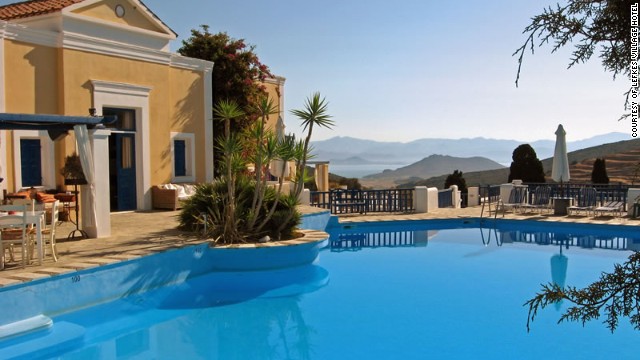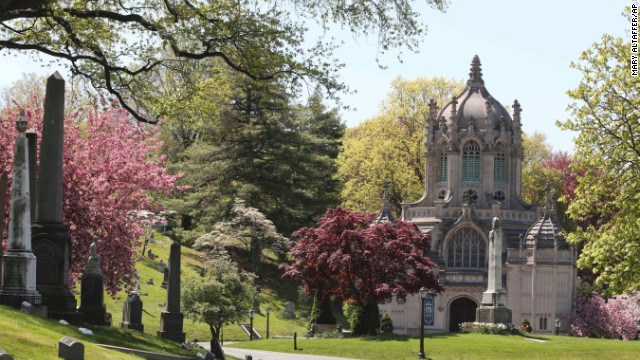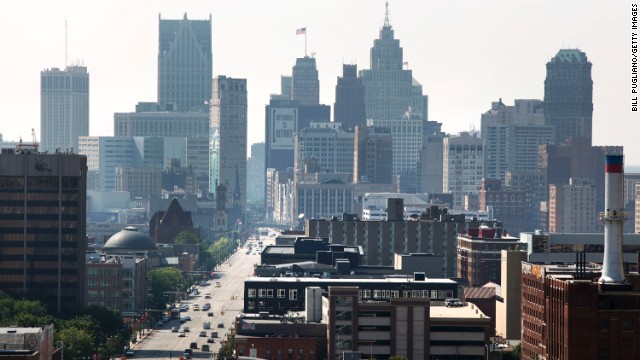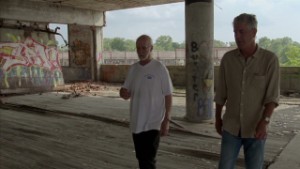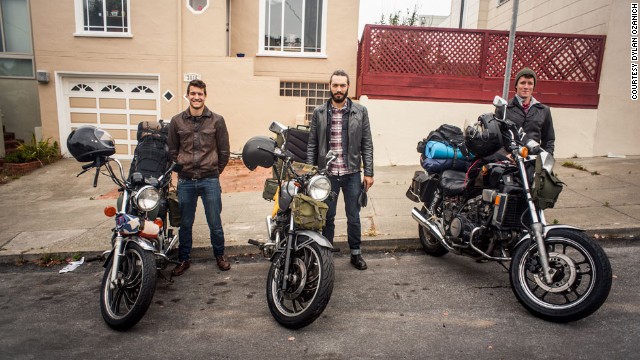
Brothers Brant and Dylan Ozanich and Wyatt McCall were at a motorcycle shop in Hamilton, Montana, ordering a part for Dylan's bike when they met two old bikers from Texas and talked with them about their trip across the country.
Although they had no treasurer, Brant pointed to McCall to answer the question. "You guys are going to need this, trust me," said one of the older men, handing him $200 in cash.
The three friends, all in their early 20s, admit they looked a little raggedy at the time. "It was straight kindness," said McCall, and typical of the generosity of the bikers they met across the country. And it turns out, "we did need it the next day for more bike repairs."
The generosity of strangers repeated itself during the two-month summer journey of three young men on the cusp of adulthood to find and document Main Street culture and people across the United States. And making the trip on motorcycles connected them not just to the towns and people they visited, but also to the country's biker community.
An exploration of biker culture
Contributing their own money and raising funds from family, friends and Kickstarter, the trio started a blog, raised over $10,000 to fund the trip and pay for the pre- and post-production costs of documenting their journey. They documented the journey on theirblog and the reddit online community, and they hope to have adocumentary and book out sometime next year.
Traveling on motorcycles turned out to be key. Dylan rode a 1982 Yamaha XJ 750 Seca ($500 cost); Brant rode a 1980 Yamaha XJ 650 Maxim ($500); and McCall rode a 1985 Honda V65 Magna ($1500 cost). "On Maxim, On Magna, On Seca" was a mantra they picked up for the trip.
"We didn't know motorcycles were going to be that much of a connection between people, but they were," said McCall. "Every time you get to a new place, you're part of this new community."
"With motorcycles you feel the scenery and the microclimate change and smell the fields you drive through," said Brant. "Besides, it's just plain badass."
Finding their first Main Street
They packed up their bikes and left around noon on July 6. They planned to head north, turn east to get to New York, south to Mississippi and then through Texas and the Southwest to return home to California, But they decided not to keep to a strict schedule, allowing for fellow travelers to guide them on their way.
It didn't take long to hit pay dirt. A few hours after they hit the road, they found their first Main Street in Point Arena, a small town north of San Francisco.
As they hopped off their bikes, the locals they met convinced them to come back the next day for a parade marking Independence Day. "The whole community came out and let us be a part of it and accepted us into the community," Dylan said.
That serendipity set the tone for the rest of the trip.
The best sandwich in Idaho, or anywhere
The travelers only had a guarantee of places to stay (and eat) in New York and Los Angeles. Everything else would be an exploration, local recommendations and possibly, information from their not-guaranteed Internet connections.
The road led them to a Mennonite deli in Clark Fork, Idaho, that "made the best sandwiches we've ever tasted," said McCall. They bought sandwiches and drove a mile down the road into Montana near a bridge to picnic and more. "We jumped off the bridge to swim," Dylan said. And the drive through the Bitterroot Mountain range that cuts Idaho and Montana wasn't too shabby either.
They also explored the source of their food, working for five days atEcho Valley Farm in Wisconsin in exchange for room and board. "It was some of the most gorgeous, breathtaking American looking farmland I've ever seen, with rolling green hills and grain mills," Brant said. "It felt like what we were looking for the whole time -- true America heartland."
The farm's kindness was typical of the people who gave them shelter on their journey. "We pulled up, three dirty bikers, to this nice sustainable farm," he said. They "showed us a nice place to park the bikes, took us on a tractor up around the whole property and told us about everything they were doing."
A willingness of strangers to share their stories was also typical. Shortly after they crossed the Mason Dixon Line into Maryland and found a good campsite at Catoctin Mountain Park, they heard music coming through the woods. "Was it a violin or cello?" said McCall, so they went to explore it.
They discovered two older Korean men playing songs about Korea on their saxophones. "We found the coolest guys on the whole trip," said McCall.
Busted shocks and other struggles
The trip wasn't without its troubles. Dylan's shocks stopped working somewhere in Montana. "For a few days I didn't know if my bike would be able to make it," he said. But they were able to fix it. "We pulled it all apart in the forest, drained it and put in new fluid."
Brant also had the smallest gas tank, holding a gallon less than the other two bikes. He also had the worst gas mileage. And so he ran out of gas at least five times on the trip, and coasted into gas stations on fumes at least three times. "I learned toward the end of the trip to carry a water bottle or two of gas."
By the time they arrived home in San Francisco on August 28, everyone was glad to sleep in their own beds again.
"For the first six days back, McCall was at his girlfriend's house, and Dylan and I sat on the couch watching movies," said Brant.
'An adult within my society'
Giving up the benefits of home for a couple months was worth the journey. Dylan left San Francisco thinking it would be a way to transition from his youth to adulthood. Along the way, he hoped to learn "what it means to be a man in my society." While he doesn't have any specific answers, "seeing my country and understanding what my country is about ... helped me understand that more."
While Brant has always liked to travel and experience new things, he thought he would graduate college, get a job and save for his next planned trip. Not anymore. "Being out there in America on the road, and roughing it, inspired me to book a plane ticket to South America with my last $400," he said. "I thought, 'If you did this, you can do pretty much anything without a lot of resources.' "
McCall, who had graduated in May not knowing what he wanted to do, thinks travel and video may be his calling.(And he learned how to ride a motorcycle along the way.)
The three friends credit each other with making it an amazing experience. "We did get in fights and have problems, but we wouldn't have been able to do it without each other," said Dylan.
"Every different leg of the trip, there was one pushing, one dragging and one on a stretcher," he said. "It would change every single day."
"We wouldn't have made it across the country and back without the others."
